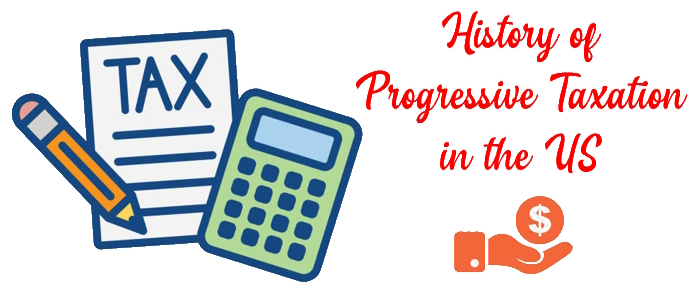History of progressive taxation in the United States
Progressive taxation is a system where the rate of taxation increases as the taxable income of an individual or entity increases. This system is often seen as a way of achieving greater economic equality, as those who earn more pay a higher proportion of their income in taxes. In the United States, the history of progressive taxation is a long and complex one, dating back to the early years of the republic.
Table of Contents
- 1 History of progressive taxation in the US
- 1.1 The Beginnings of Progressive Taxation in the United States
- 1.2 The Civil War and the First Income Tax
- 1.3 The Repeal of the Income Tax and the Rise of Populism
- 1.4 The 16th Amendment and the Era of Progressive Taxation
- 1.5 The Income Tax During World War I
- 1.6 The New Deal and the Great Depression
- 1.7 The Postwar Era and the Tax Reform Act of 1969
- 1.8 The Reagan Revolution and the Tax Reform Act of 1986
- 1.9 The Contemporary Debate over Progressive Taxation
- 2 Conclusion
History of progressive taxation in the US

The Beginnings of Progressive Taxation in the United States
The idea of progressive taxation was first proposed by Thomas Paine in his 1795 pamphlet, “Agrarian Justice”. Paine argued that since land was a common resource, those who owned it should pay a tax to support those who did not. He proposed a graduated tax on landowners, with the proceeds used to provide a basic income to all citizens.
The Civil War and the First Income Tax
In the early years of the United States, taxation was primarily levied on imports and exports. The first direct tax on income was enacted during the Civil War, as the federal government struggled to finance the war effort. The Revenue Act of 1862 established a progressive income tax, with rates ranging from 3% to 5% for incomes above $600.
The Repeal of the Income Tax and the Rise of Populism
The income tax was repealed after the war, but the idea of progressive taxation gained ground in the late 19th and early 20th centuries. In 1894, Congress enacted a flat rate income tax, which was struck down by the Supreme Court as unconstitutional in 1895. The court held that the tax violated the Constitution’s requirement that direct taxes be apportioned among the states according to their population. This ruling helped to fuel the populist movement, which argued that the wealthy were not paying their fair share of taxes.
The 16th Amendment and the Era of Progressive Taxation
In 1913, the 16th Amendment to the Constitution was ratified, granting Congress the power to levy an income tax without apportionment among the states. The same year, Congress enacted a new income tax, with rates ranging from 1% to 7% for incomes above $20,000. This amendment paved the way for the modern system of progressive taxation in the United States.
The Income Tax During World War I
The income tax became an important tool for the federal government during World War I, as it helped to fund the war effort. In 1918, Congress raised the top rate to 77% for incomes above $1 million, as part of a wartime revenue bill.
The New Deal and the Great Depression
The income tax continued to play an important role in funding government programs throughout the 20th century. During the Great Depression, President Franklin D. Roosevelt introduced a series of New Deal programs, many of which were funded by progressive taxation. The Revenue Act of 1935 raised the top income tax rate to 79% for incomes above $5 million.
The Postwar Era and the Tax Reform Act of 1969
In the postwar era, progressive taxation remained a central feature of American fiscal policy. The Tax Reform Act of 1969 introduced a system of graduated tax rates, with a top rate of 70% for incomes above $200,000. This act was a response to growing inequality in the 1960s and 1970s.
The Reagan Revolution and the Tax Reform Act of 1986
The Tax Reform Act of 1986 simplified the tax code and lowered rates, but still maintained a progressive structure, with a top rate of 28% for incomes above $175,000. This act was part of the “Reagan Revolution”, which sought to reduce the role of government and promote economic growth through tax cuts and deregulation.
The Contemporary Debate over Progressive Taxation
Today, there is ongoing debate over the appropriate level of progressivity in the tax code. Some argue that the current system is not progressive enough, as the wealthiest individuals and corporations are able to exploit loopholes and deductions to reduce their effective tax rate. Others argue that the current system is too progressive, and that high earners are already paying a disproportionately high share of the tax burden.
Conclusion
The history of progressive taxation in the United States is a long and complex one, dating back to the early years of the republic. While the income tax has been an important tool for funding government programs and achieving greater economic equality, it has also been the subject of numerous controversies and critiques. The appropriate level of progressivity in the tax code is a subject of ongoing debate, with advocates and critics on both sides of the issue. Nevertheless, the concept of progressive taxation remains a central feature of American fiscal policy, and is likely to remain so for the foreseeable future.


